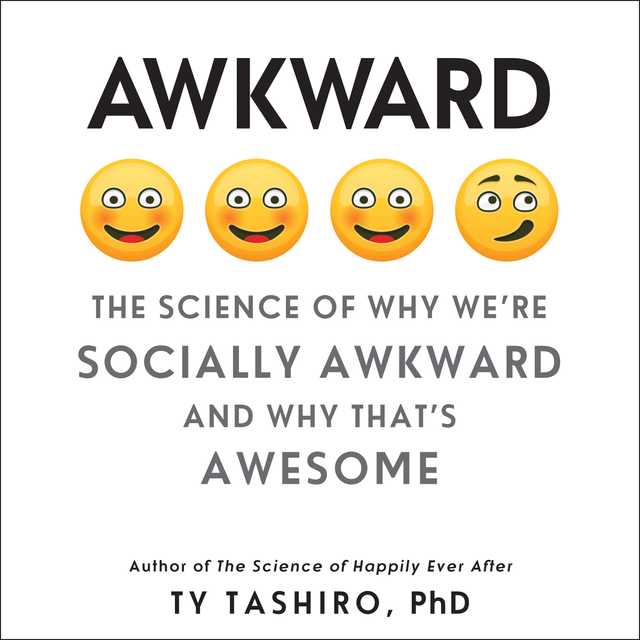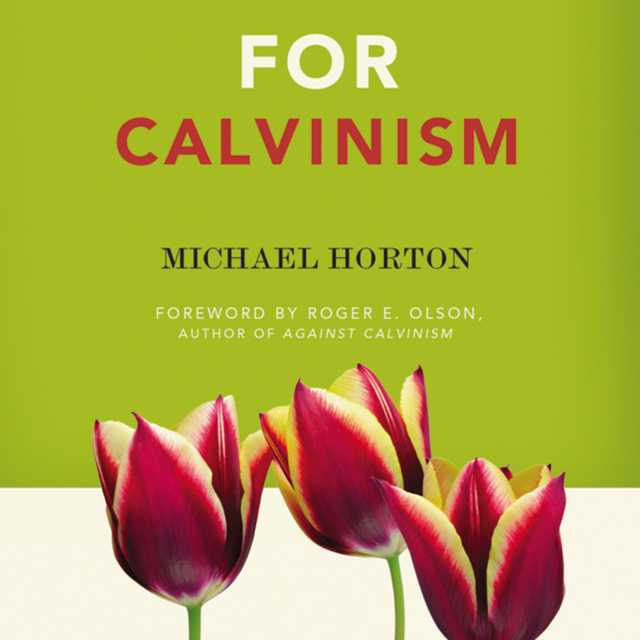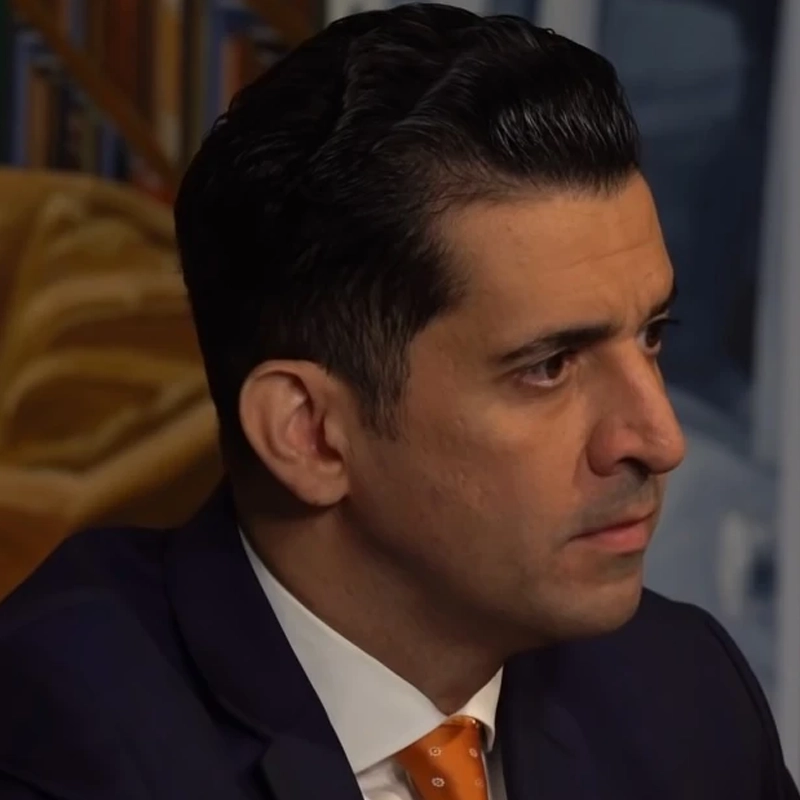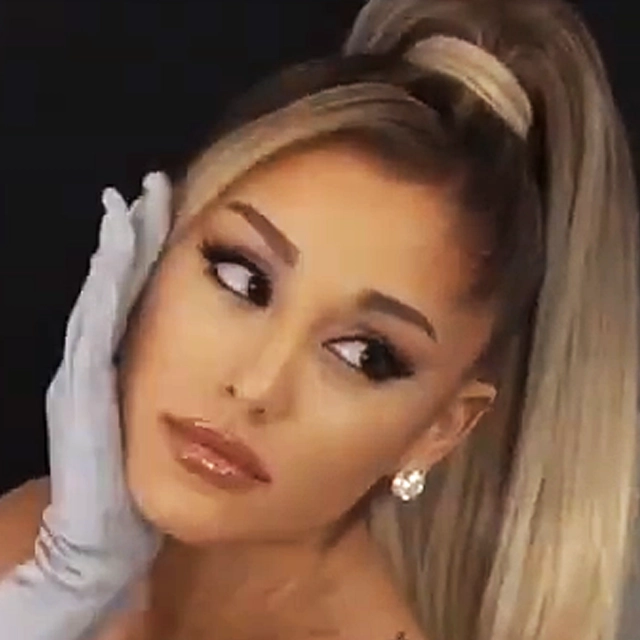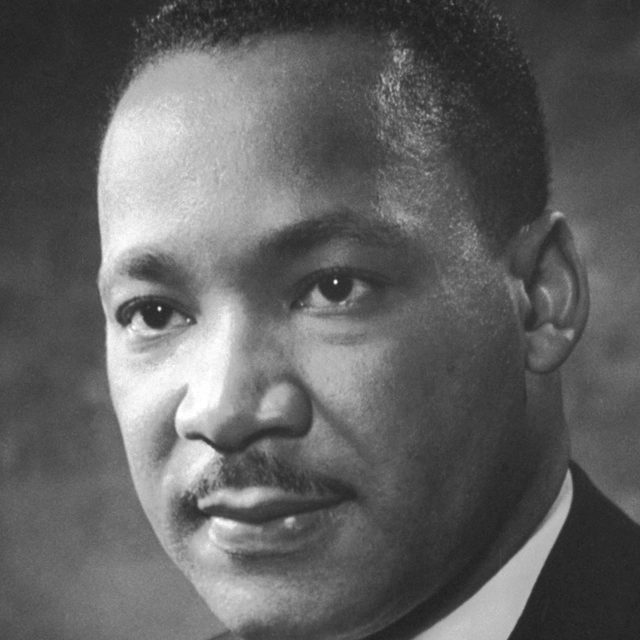Awkward Audiobook Summary
In the vein of Quiet and The Geeks Shall Inherit the Earth comes this illuminating look at what it means to be awkward–and how the same traits that make us socially anxious and cause embarrassing faux pas also provide the seeds for extraordinary success.
As humans, we all need to belong. While modern social life can make even the best of us feel gawky, for roughly one in five of us, navigating its challenges is consistently overwhelming–an ongoing maze without an exit. Often unable to grasp social cues or master the skills and grace necessary for smooth interaction, we feel out of sync with those around us. Though individuals may recognize their awkward disposition, they rarely understand why they are like this–which makes it hard for them to know how to adjust their behavior.
Psychologist and interpersonal relationship expert Ty Tashiro knows what it’s like to be awkward. Growing up, he could do math in his head and memorize the earned run averages of every National League starting pitcher. But he couldn’t pour liquids without spilling and habitually forgot to bring his glove to Little League games. In Awkward, he unpacks decades of research into human intelligence, neuroscience, personality, and sociology to help us better understand this widely shared trait. He explores its nature vs. nurture origins, considers how the awkward view the world, and delivers a welcome counterintuitive message: the same characteristics that make people socially clumsy can be harnessed to produce remarkable achievements.
Interweaving the latest research with personal tales and real world examples, Awkward offers reassurance and provides valuable insights into how we can embrace our personal quirks and unique talents to harness our awesome potential–and more comfortably navigate our complex world.
Other Top Audiobooks
Awkward Audiobook Narrator
George Newbern is the narrator of Awkward audiobook that was written by Ty Tashiro
Ty Tashiro, PhD, is the author of The Science of Happily Ever After. His work has been featured in the New York Times, the Washington Post, Time.com, TheAtlantic.com, and on NPR and SiriusXM Stars radio. He received his doctorate in psychology from the University of Minnesota, has been an award-winning professor at the University of Maryland and University of Colorado, and has addressed TED@NYC, Harvard Business School, MIT’s Media Lab, and the American Psychological Association. He lives in New York City.
About the Author(s) of Awkward
Ty Tashiro is the author of Awkward
More From the Same
- Publisher : HarperAudio
- Abraham
- American Gods [TV Tie-In]
- Dead Ringer
- House of Sand and Fog
- Prey
Awkward Full Details
| Narrator | George Newbern |
| Length | 6 hours 57 minutes |
| Author | Ty Tashiro |
| Publisher | HarperAudio |
| Release date | April 25, 2017 |
| ISBN | 9780062659767 |
Additional info
The publisher of the Awkward is HarperAudio. The imprint is HarperAudio. It is supplied by HarperAudio. The ISBN-13 is 9780062659767.
Global Availability
This book is only available in the United States.
Goodreads Reviews
Tuomas
April 02, 2021
Viime vuonna kirjoitin blogiesseen ”Kiusaantuneisuudesta”. Tarkoitukseni on ollut kirjoittaa tekstiä uudelleen kokoelman kasaamista varten, joten hankin Ty Tashiron tietokirjan lähdemateriaaliksi, jotta olisi jotain tieteellisempää mihin tukeutua. Ajattelin poimivani kirjasta pari sitaattia käytettäväksi esseessä. Se ei toiminut niin. Awkward kertoo nimittäin aivan eri asiasta. Kuvasin tekstissäni tilanteita, jotka tuntuvat kiusallisilta, ja etsin tuntemusten lähteitä henkilöhistoriasta. Tashiro kertoo kirjassaan ihmisistä, jotka ovat kiusallisia, niistä, joille sosiaaliset tilanteet ovat kuin vaikea peli jossa joutuu jatkuvasti umpikujaan. Ajatteluni keikahti toiseen suuntaan viimeistään sivulla 35 nähdessäni kaavion. Se esittää ihmisiä, jotka sijoittuivat ”autism quotient score”-janalle. Tiivistettynä: sosiaalisesti ”normaalitkin” ihmiset saivat tutkimuksessa keskimäärin 16 pistettä. Autismidiagnooseja saaneiden keskimääräinen pistemäärä oli 32. Kaiken kaikkiaan 85 % ihmisistä sijoittuu alle 24 pisteen saajien joukkoon. Tuon 24 pisteen paikkeilla ovat ne, joita Tashiro kutsuu kirjassa nimityksellä ”awkward”. Heidän sosiaaliset haasteensa eivät ole niin suuret, että heidät diagnosoitaisiin autismin kirjolle, mutta heillä on sen verran haasteita, että ne eivät jää huomaamatta heiltä itseltään tai muilta. Kaavion nähtyäni totesin, että on todennäköisesti kirjoitettava erillinen essee, ”Kiusallisuudesta”.Awkward on esseemäisen omakohtainen tietokirja, jossa on paikoin self-helpin piirteitä. Se on kirkaskielinen ja pysyy tiiviisti aiheessaan. Tashiro kuvaa omia kokemuksiaan kiusallisena ihmisenä, jota vanhemmat joutuivat lapsuudessa opastamaan monta kertaa, jotta hän saisi tilauksen tehtyä ravintolassa tai osaisi keskittyä oikealla tavalla, ettei läikyttäisi maitoa. Kiusallisuus näyttäytyy synnynnäisenä piirteenä, ja ympäristö voi joko auttaa tällaista ihmistä oppimaan sosiaalisia malleja ja sen avulla pärjäämään uusissa tilanteissa toisten kanssa, tai se voi syrjäyttää kiusallisena pitämänsä ihmisen. Kiusallisia määrittää erityisesti se, että he näkevät yksityiskohtia kuin kohdevalon kirkastamina, mutta kokonaiskuva jää heiltä hämärään – monet heistä ovat kuitenkin lahjakkaita asioissa joista ovat kiinnostuneita. Kirja on varsin amerikkalainen korostaessaan kiusallisen yksilön vastuuta elämänsä parantamisessa; on sopeuduttava sosiaalisiin normeihin vaikka sitten pänttäämällä ”oikeat” käytössäännöt päähänsä. Melko vähäiseksi jää minusta sen sanoittaminen, että ihmisten tulisi kasvattaa lapsensa hyväksymään erilaiset ihmiset ja tulemaan toimeen heidän kanssaan – sen sijaan kiusallisten ihmisten karttaminen selitetään ihmisen biologisella yhteenkuuluvuuden tarpeella (jo metsästäjä-keräilijät…) ja lyödään siten lukkoon. Normaaliuden airueina esitetään kouluaikojen suositut, jotka hankkivat menestysuran, vilkkaan sosiaalisen elämän ja osaavat hymyillä kuvissa luontevasti.Mieleeni hiipii pohdinta: onko tästä kirjoitettu suomeksi niin vähän sen takia, että meillä ei ole kunnon käännöstä sanalle awkward? (Olen tässä käyttänyt ”kiusallista”, mutta monissa tilanteissa voisi toimia paremmin ”nolo”.) Vai onko kyse samasta asiasta kuin introverttiuden tapauksessa: suomalaisessa yhteiskunnassa on osattu suhtautua ymmärtävämmin sosiaalisissa tilanteissa tuppisuisiksi ja varautuneiksi jääviin ihmisiin – jotka pelkäävät sanovansa jotain hölmöä tai väärää –, koska täällä heitä on aina ollut paljon. Lisäksi kulttuurissamme ei ole yhtä korostunutta tiukkojen näkymättömien sääntöjen small talk -käytäntöä, jossa on osattava sanoa oikealla sävyllä kaikille kohtaamilleen ihmisille ”hello, how are you, fine thanks, have a nice day” ja hymyiltävä säteillen koko ajan. Vai korostanko kulttuurieroja liikaa? Onhan täkäläistenkin kesken puhuttu paljon selän takana ihmisten kummallisesta käytöksestä ja kömmähdyksistä, ja monet tulevat lapsena kiusatuiksi, koska eivät osaa sosiaalista peliä niin hyvin kuin valtaosa. Mutta mittakaava kirjan kuvaamissa asioissa on ehkä jossain määrin eri Atlantin toisella puolen. Vaikka Tashiro puhuu kiusallisista ihmisistä ryhmänä, hän muistuttaa että moni ”socially fluent” kokee myös kiusaantumisen tunteita. Tämä oli havaittavissa myös aiemman esseeni saamissa kommenteissa. Ihminen ei koskaan ole tiukasti määriteltävissä lokeroon, eikä kukaan sovi sataprosenttisesti otsikon alle.Ja miten tämä aihe liittyy minuun? Siitä kerron, kun saan joskus kirjoitettua sen esseen.”Awkward people find themselves at a complicated intersection, caught in the gray area where society tries to draw clear lines between normality and abnormality.” (s. 41)
A.
September 09, 2021
What a fabulous book! I'm not especially awkward and my social life is not very hampered by awkwardness but I am so enamored by this book. It was a fun read, a useful read, an interesting read. Ty Tashiro is a gifted storyteller and his personal anecdotes, weaved together with scientific research AND practical good sense advice is an irresistible combination. I highly recommend this book to anyone who is on the autism spectrum and struggles with social relationships. (Or to their parents.) The spotlight metaphor is extremely enlightening--some people don't see what's happening on center stage as "the main action" and instead are looking at certain details on the side as if they are in a spotlight. They *could* pay attention the the middle of the stage, but it's dark and not that captivating.The book goes through both the pitfalls and benefits of this way of viewing things. (Did you know that primates evolved a specific part of the brain to navigate and understand social relationships and in awkward people on fMRI this part of their brain doesn't light up when they are puzzling through social things? Rather, the part of the brain used to solve math problems lights up in their brain.)Another fascinating aspect of this type of personality is a phenomenon called the "rage to master." This is a description of the intensity and single-mindedness they bring to mastery, even the more rote and "boring" aspects. Tomorrow I plan to type out a number of quotes from this book that I particularly enjoyed or that struck me because even though I don't relate to the awkward part much, there were many things that greatly interested me about this book.
Issac
July 15, 2017
Review of AWKWARD: The Science of Why We’re Socially Awkward and Why That’s Awesome written by Ty Tashiro, PhD13 July 2017Stolzenbach Hessen(Original from https://sinistralway.com/review-of-aw...)New Ways to Join the Human Condition ClubI’ve never experienced this before: It’s a great feeling to have Christmas shopping finished in mid-July! I’m going to purchase a copy of Dr. Ty Tashiro’s new book, AWKWARD, for everyone who puts up with me.Ty is very kind to his reader and his Voice on the page is patient and wise. While offering enviable real-world insight, Ty also cites his sources, which are based on the latest neuroscience and psychology research (2017). The psychologist describes what it was like coming up awkward through grade school in the ‘80s with such precision I had to ask him about his handedness (#truestory). While everyone else in junior high was wearing black Metallica t-shirts and bluejeans, we the awkward took an overthought tack instead:“My blanket philosophy that an adultlike approach would be my best bet led to a number of misguided tactical decisions. When the first day of [junior high] school arrived, I chose an outfit that included a starched baby-blue oxford, a crisp pair of pleated khaki pants, and a pair of extra-large, square silver glasses that looked like the bifocals my grandparents’ friends wore. If I were a sixty-year-old accountant, I would have looked dashing.” ~Ty TashiroMy first day of seventh grade at Lassiter Middle School in Louisville (after getting kicked out of a third Catholic school) went down pretty much the same way. I stood so brilliantly out of place, Patrick Delkener swam across the packed lunchroom wearing ripped jeans and a black Megadeth shirt — he took me under his wing: “Dude, it’s so obvious you’re gay,” he said quietly patting my shoulder, “I know because my older sister is gay too. It’s cool man, just don’t tell anyone.” Patrick protected me and – after a brief discussion on all the sex stuff I knew nothing about – we discovered that I was simply lefthanded.Ty often uses the stage- and spotlight metaphor as a way to accurately describe how awkward people see the world: while watching a play on stage, socially intuitive people can see the whole production under stagelight; socially awkward people, on the other hand, have a spotlight focus on one part of the stage. This means it takes an awkward person – upon entering a social event – more time for their brain|eyes to react to the scene.Lefthanded kids experience the same thing, but I always described it as “reverse-engineering” the situation: seeing the end goal; evaluating the steps required to get there; execute. After evaluating and testing hundreds (or perhaps thousands?) of social interactions, it is possible to develop social intuition.Ty Tashiro has used his doctorate in psychology from the University of Minnesota in many capacities: as researcher, professor, and practitioner. His unique interests, skills, and talents have landed him publication in the New York Times, the Washington Post, TIME, and The Atlantic – he’s even given TED@NYC talks. I welcome many of his mantras sinking into my skull: be fair, kind, and loyal in all things; work to widen spotlight view to stagelight; recognize rage to master tendencies.Be fair, kind, and loyal in your friendships and social interactions. I will repeat this to myself daily and be aware of the “rage to master” personality trait. Ty attributes the rage-to-master theory to Professor Ellen Winner, chair of the psychology department at Boston College and senior researcher at Harvard, who claims that gifted people tend to exhibit a unique ability at the sacrifice of something else (i.e., smart but not socially adept):“Technically, giftedness is defined by someone’s level of ability, their raw intelligence, athleticism, or artistic ability. But Professor Winner and others have found that gifted individuals are also more likely to have a certain type of personality. Gifted people tend to be stubborn, rebellious, and perfectionistic. They show an unusual drive to master their area of interest and they are constantly trying to push the status quo, which motivates them to pursue their interest with an unusual intensity and persistence. Winner calls this constellation of personality characteristics and attitudes the ‘rage to master.’”I’m betting the folks who know me are currently nodding their heads. I laughed out loud when I read this next bit b\c I’d recently experienced it at Spalding University’s writing residency: “Even when talented people share the same areas of interest as their peers, their rage to master can be off-putting to others who want to have fun instead of rage. When talented people cannot approach their interests with the intensity or pace they prefer, you will sometimes hear them say, ‘This person has no sense of urgency!’” 😂🤣😂 [my emphasis]AWKWARD is an important text for the current era in which we live. I have never witnessed and experienced the heightened-mean-spirited vibe that is currently permeating the United States. It’s a lefthanded thing to be able to blend in just about anywhere, but currently I’m at a loss as to what Chameleon color I should be in 2017. Until I figure it out, I’m looking for ways to bring the rampant tribalism closer toward the center. One way is following the lead of Tori Murden McClure, author of A Pearl in the Storm, who created the first Charter for Compassion (charterforcompassion.org) school in the U.S. (Spalding University); Ty Tashiro’s philosophy in AWKWARD is another way to bring us all closer.In this text, Ty identifies – through both research and personal experience – a specialized group (like leftys) that may sometimes appear out of place (and sound aggressive in person) but always maintain the best possible intent. He also provides guides for people like us interacting with the world, and for the world interacting with people like us 😬I wrote to Professor Tashiro b\c I had to know if he was lefthanded (supporting documentation for my creative thesis Sinistral Way) and it turned out even better than expected: “. . . I was interested to see your question because as I thought about it, I was kind of surprised that I’m not lefthanded. I’m not an expert in the psychological research on left-handedness, but from what I know, the creativity and stubbornness to follow a different path (which of course can be positive) does seem to overlap with some of the dispositions that characterize many awkward people. It’s interesting that compared to the base rate of left-handedness in the general population [10–15%], I seem to have a disproportionate number of friends who are left-handed. Hmmm . . . so interesting.”Ty found a way to include everyone and anyone in this specialized group. I will endeavor to do the same in the book I’m working on, Sinistral Way. I can’t thank Ty enough for showing me a way to do that in AWKWARD and I have personally thanked him for writing this book: it is a rare treasure. Please purchase a few copies: it will shed light on past awkward interactions, better prepare you for future interactions, and give you an edge in communicating with the highly skilled people who can bring your vision to fruition.
Yoly
March 10, 2020
For me, this wasn't as life changing as Quiet: The Power of Introverts in a World That Can't Stop Talking, but I really enjoyed it.
Sean
August 27, 2020
A fun read that was more than a little relatable, this book covers a wide aspect of what being awkward means and some suggested ways to make social situations easier to navigate.____Awkward people see the world different from non-awkward people, using a narrow spotlight (fragmented viewpoint), rather than taking in the big social picture (tone in the room, level of formality etc). This spotlighted attention gravitates towards nonsocial areas that are systematic in nature, which is why they like the rules of math or logic of coding. "Awkward people often tell me : 'I wish that people would give me a chance because I think that they will like me'".The guiding question of social deliberations - how do you fit in without losing yourself? - manners and etiquette serve as the common ground, as baseline expectations.When individuals adhere to expectations, such as friendly greetings or turn taking, they are demonstrating in small ways that they want to be prosocial, that they are aligned to the broader goals of the group.The difference between social anxiety and awkwardness is anxiety is unreasonable fear about being inappropriate, while awkwardness refers to (concern over) one's actual ability to be appropriate. Awkward people sometimes have a heightened sense of fairness or compassion because they have been on the receiving end of unfair or unkind acts.Being socially skilled is like a language, that most people are fluent in. The three important cues that give awkward people trouble: non-verbal behaviours, facial expressions, and decoding language used during social conversations.There is often an agitated vibe that characterises your interactions with awkward people, giving the appearance that they are nervous, upset, or irritated. If you view the awkward people as someone experiencing the interaction as particularly intense, the unusual vibe starts to make more sense.As a coping mechanism, awkward people learn to temper this intensity by avoiding things that trigger strong emotions, like avoiding eye contact, sidestepping emotional conversations, or might even feel overwhelmed by praise from others.Awkward people's emotional lives could be potentially adaptive (think Kipling's "if you can keep your head when everyone else is losing theirs) being calm in stressful situations, or having obssessive attention to detail.Both popular and likeable people tend to be socially fluent, but people motivated by popularity use their mind-reading skills to boost their social status or protect their position, while likeable people use it for the greater good. *Likeable people are driven by 3 core values: be fair, be kind, and be loyal.*Bullies' moral reasoning capabilities are as sound as their peers, though they show significantly lower levels of compassion, and were more likely to rationalise their immoral behaviour by seeing their selfish gains as taking precedence over the emotional costs incurred by victims.Numerous intellectuals have pointed to an interesting shift in the expectations held by the modern family. The expectation used to be that parents simply provide a safe, supportive environment for their children, but that shifted to an expectations that parents intensely manage their children's progress towards discernable achievements in the classroom or playing field.Part of the job description of being a child is to do some things that are socially inappropriate or foolish, suffer the consequences, and then take responsibility for the correcting course.Awkward kids are slower to realise that factual comments can be hurtful or get other people in trouble; for them, it's just reporting the facts.Mentally preparing kids for social interactions is no different from helping kids with their math homework. There is a valuable opportunity to coaching them in concrete skills that can make a difference in their ability to smoothly navigate social situations and form meaningful ties.What awkward kids need from their families: clear expectations, a sound rationale for rules and routines, and fairness in enforcing these expectations. (systemic treatment)By heavily weighing fairness, kindness and loyalty, one buys leeway to bypass some of the minor social expectations. (working the halo effect).We end up being friends with people close by, who are similar to us, and reciprocate liking (are willing to tell us they like us).Core message of Alkon's book on manners - good manners are important because they are a mechanism for showing other people empathy and respect.Etiquette decreases the proportion of unpredictability in social situations (a playbook for common scenarios), allowing awkward people to focus on actually being in the moment.Gifted people tend to be stubborn, rebellious, and perfectionistic. They show an unusual drive to master their area of interest and they are constantly trying to push the status quo, which motivates them to pursue their interest with unusual intensity and persistence. Ellen Winner calls this the "rage to master".The beauty of our social relationships is not about social awkwardness or skill, but rather comes from our kind attention to thousands of social details.
Karen
May 15, 2017
More useful advice than Quiet.
Rachel
January 10, 2020
Listened to this audiobook and I really enjoyed it! Fascinating stuff about the medical diagnosis of "awkwardness" vs a meditation on the various meanings of the word. I found myself recognizing friends, family members, and even many of my own personality traits in some sections. Recommended!
Joseph
December 02, 2017
Awkwardness is like the common cold--humanity seems to be stuck with it. Everyone is susceptible but some people more so. Everyone has the occasional awkward moment while some people seem to exude awkwardness. Psychologist Ty Tashiro realized that no one has pulled together the research on awkwardness and found answers to why we are awkward and what we can do about it. This book presents his findings with a blend of personal experience, real world examples, current research, and deep yet accessible analysis.The first part of the book looks at awkwardness itself. Tashiro observes that awkward moments come when people miss certain social cues or expectations. For awkward people, their focus spotlights particular details that they find interesting, often missing the larger picture or other critical details in a situation. It's as if social rules are not intuitive or interesting to awkward people. However, once those rules are broken, the lapse is immediately obvious and uncomfortable. Understanding emotions is challenging for everyone and can be more difficult for awkward people. Certain parallels with autism are brought out though Tashiro does not identify awkwardness with autism. Learning some social dynamics and having strategies for dealing with particular situations are ways to alleviate the level of awkwardness in life for anyone.The second part of the book looks at how modern society is making people feel more awkward. The shift away from face-to-face contact started with the telephone. Now with email and texting, a lot of the important interpretive details (facial expression, vocal inflection, etc.) are missing. The likelihood of misinterpreting or misconstruing an action or statement skyrockets. The problem is even worse in dating, where social expectations have shifted and blurred what used to be clear cut distinctions. When are you just friends? When are you going steady? When (or even if) should you get married? Nowadays, these questions have more ambiguity, causing more awkwardness.The final part of the book considers how awkwardness is awesome. Tashiro discusses how being awkward is an adaptive trait. Evolutionarily, being awkward would seem like a negative trait that should eliminate those people from the gene pool. The awkward person's ability to stick with mundane tasks long past the point of boredom for a regular person can often contribute to the social group. Further, the ability to focus and to put together seemingly incongruent ideas is a hallmark of innovators and the awkward. There is a parallel or overlap between awkwardness and brilliance. Awkwardness definitely has an upside.The book is surprisingly engaging. The author usually starts chapters with a personal anecdote (he's had his own awkward life) or a real life example and uses it throughout the chapter to concretize the research, ideas, and conclusions he presents. The blending of philosophical distinctions with actual experiences makes his ideas more understandable and memorable. The book reads quickly and inspires hope for dealing with awkward situations, people, and your own awkwardness.Highly recommended.
Terry
March 28, 2020
Awkward is probably one of the most insightful books I've read in the past year. It's an amazing dissection of the phenomenon of being awkward, where it comes from, and certain ways to cope with it.Awkwardness often stems from a very focused view of the world. The comparison the author made was to watch a stage show where there was a spotlight on a single area of the state that never moved. The awkward person in generally has very focused attention and may miss the rest of the play but will have remarkable understanding and insight into what happened in that particular area. Awkward people can build up little habits of trying to move that spotlight around to catch more of what's happening and get a more holistic view of what the arena of interaction is looking like.The book also does an interesting dissection of the phenomenon of courtesy and manners and why they're important. The gist being that people rate others as being convivial or easy to work with based on the ratio of successful social cue responses to unsuccessful ones. Manners and pro forma behaviors allow us to put a few points on the board before we potentially miss a cue or commmit a faux pas. The world shifting to more casual interactions has made the world more awkward because we have fewer opportunities to use manners and trade cues.This is just two of probably five large insights the book had. If these sound at all interesting, go read it.
Keely
May 29, 2017
In "Awkward," psychologist Ty Tashiro examines the trait of social awkwardness and both the challenges and advantages that come with it. On the positive side, socially awkward people tend to have intense focus on their personal interests, which often leads to extraordinary achievements or innovations. In addition, awkwardness frequently overlaps with remarkable talent or areas of giftedness. On the other hand, awkward people also tend to devote attention to their areas of interest at the expense of developing social graces that communicate positive intent and help them fit in. This is especially problematic because awkward people desperately need good social graces to balance a natural inability to pick up on social cues and see the bigger picture in social situations. Throughout, Tashiro celebrates what's awesome about being awkward while also offering strategies to help awkward individuals navigate social life and develop nurturing relationships. I felt like the book got repetitive at times, but as an awkward person and a parent of awkward kids, I also found it both affirming and helpful.
Eustacia
August 17, 2021
I found this book when it was highlighted by the Public Libraries SG’s Instagram account and as someone who feels awkward a lot, I thought it was something that I should read.Written by Ty Tashiro, a self-confessed awkward person, Awkward the book breaks down the issue of awkwardness into three aspects:What is awkwardness?Awkwardness in a social context – nurturing awkward kids and the awkwardness of dating/making friendsThe shift towards embracing awkwardnessAccording to Tashiro, awkward people are those who see the spotlight instead of the whole show. While social adept people can view a social situation at large and figure out what they need to do, awkward people tend to zero in one particular aspect, making them more prone to making small social missteps that could cost them social capital. So while awkward people have their strengths, they tend to deplete the goodwill other people have for them, which makes it harder for them to interact with others.For Tashiro, his parents helped him by teaching him how to act in certain situations in a matter-of-fact manner. For example, before they went into a fast-food restaurant, they would drill him on the things he needed to do (e.g. decide on what to eat while queuing, say please and thank you, have the money ready), to help him to eventually generalise what he needed to do in similar situations.While I enjoyed most of the book, I did think that the second section on awkwardness in social contexts could be longer. This section is subtitled “how modern societal shifts are making everyone feel more awkward”, but apart from a discussion on how the internet strips conversations of body language and other cues that make it easier to discern tone, I didn’t really see much about how everyone is feeling more awkward compared to the past. Are we indeed more awkward or is it just that very online people are awkward types (and socially fluent people are living their lives offline) and hence it seems like everyone is more awkward?Overall, I found this to be an interesting book on what it means to be awkward. I enjoyed the many stories from Tashiro and his patients and it made me realise that I was lucky to have grown up with a group of supportive friends that, ultimately, helped me feel like I belonged despite my awkwardness.This review was first posted at Eustea Reads
Ryan
November 11, 2018
I first heard of this book when the author was interviewed on The Art of Manliness Podcast and gave some great practical advice on picking up on social ques and improving your social skills. The title can be a little missleading but the first chapter clears up any confusion. This book is about helping those awkward people improve their social skills not glorifying the negative traits they posses. Part 1 of the book shifts between usually humorous and sometimes autobiographical antidotes, explaining in laymen’s terms how the brain functions, and practical advice for improving your social skills. These are all woven together in a compelling way that makes Part 1 a joy to read. Part 1 is a great resource for those looking to improve their social skills.Part 2 deals with some of the reasons causing interactions to become more difficult for everyone in recent history. He shows how online interaction has changed how we interact and shows the importance of parent’s teaching their children proper social ediquette. He becomes inconsistent in this section. He shows how the decline of formal manners, the traditional family, marriage, and local communities of like minded individuals have lead to people having poorer social skills. Instead of lauding the institutions which had helped people develop these skills he lauds “societal progress” right after showing its plethora of failures. Chapters 7 and 8 are the weakest part of the book and could be skipped. Along the way he continues to sprinkle in anecdotes and practical advice for improving your manners and social skills. In Part 3 the author argues that there is a great overlap between people with poor social skills and those who are gifted in other non-social areas. He spends this section showing examples of this. Overall I would recommend Awkward (especially Part 1) for those who have poor social skills and want to put forth the effort of improving them.
Annie
January 11, 2020
It's only towards the end of the book when the author describes the trade-offs of intelligence and social awkwardness. Much of the book is about children, who are awkward - what are they thinking and why they are behaving differently. There is advice on how to help them navigate the social world, like focusing on three social cues at a time. For example, if a friend greets you, then look him in the eye, smile, and say "hi." If he asks "how are you," then respond "I'm fine" and ask him how he is. These social scripts help children see the pattern in people's behaviors. It is like learning the language and customs of a foreign country for them.
Gillian Page
February 15, 2020
I wouldn’t say I’m particularly awkward although I’ve certainly put my foot in my mouth from time to time, but I was still drawn to this book because let’s face it, we’re all a little awkward. That and I find human behaviour to be, as Ty says, both maddening and wonderful. Ty is a great writer. He writes non-fiction in a way that feels like you’re reading fiction—not easy to do. I found “Awkward” to be enlightening, informative, funny and surprisingly heartfelt. At the end of the day, choosing to learn more about other people is an act of empathy. Ty’s book is one that I feel can be appreciated by everyone and used as a tool to better understand yourself as well as those around you. Anything that inspires more compassion, more empathy, more kindness in the world is a win for me. This book does just that!
Jeanette
September 12, 2017
I like how the author is himself awkward and includes his own experiences as he explains why awkward can be good. He makes a lot of good points and I enjoyed his writing style. Alrhough I do think the book could of been a little shorter. I found myself skimming toward the end. I got the point and didn't need the extra pages of how some awkward people have hyper focus and that makes them awesome. The book focuses on those people and not so much the people that are awkward without being amazingly good at something.
Mike
January 15, 2020
Not sure this actually warrants a 5 star review, but I thoroughly enjoyed myself. I laughed out loud, I occasionally related, found his research interesting, and conclusions to be reasonable. Ty has essentially invented a category for personality classification with criteria and research. He does not excuse awkwardness nor does he insist that it has a simple solution. He has fun with it while trying to learn how to understand people. Empathy and acceptance are the underlying principles to his work.
Van
June 28, 2018
Like QUIET: THE POWER OF INTROVERTS, I felt like this was written more for people who aren't awkward to learn about what's going on in the heads of those who are, rather than for awkward people to learn more about themselves. It was still a good read though.
Frequently asked questions
Listening to audiobooks not only easy, it is also very convenient. You can listen to audiobooks on almost every device. From your laptop to your smart phone or even a smart speaker like Apple HomePod or even Alexa. Here’s how you can get started listening to audiobooks.
- 1. Download your favorite audiobook app such as Speechify.
- 2. Sign up for an account.
- 3. Browse the library for the best audiobooks and select the first one for free
- 4. Download the audiobook file to your device
- 5. Open the Speechify audiobook app and select the audiobook you want to listen to.
- 6. Adjust the playback speed and other settings to your preference.
- 7. Press play and enjoy!
While you can listen to the bestsellers on almost any device, and preferences may vary, generally smart phones are offer the most convenience factor. You could be working out, grocery shopping, or even watching your dog in the dog park on a Saturday morning.
However, most audiobook apps work across multiple devices so you can pick up that riveting new Stephen King book you started at the dog park, back on your laptop when you get back home.
Speechify is one of the best apps for audiobooks. The pricing structure is the most competitive in the market and the app is easy to use. It features the best sellers and award winning authors. Listen to your favorite books or discover new ones and listen to real voice actors read to you. Getting started is easy, the first book is free.
Research showcasing the brain health benefits of reading on a regular basis is wide-ranging and undeniable. However, research comparing the benefits of reading vs listening is much more sparse. According to professor of psychology and author Dr. Kristen Willeumier, though, there is good reason to believe that the reading experience provided by audiobooks offers many of the same brain benefits as reading a physical book.
Audiobooks are recordings of books that are read aloud by a professional voice actor. The recordings are typically available for purchase and download in digital formats such as MP3, WMA, or AAC. They can also be streamed from online services like Speechify, Audible, AppleBooks, or Spotify.
You simply download the app onto your smart phone, create your account, and in Speechify, you can choose your first book, from our vast library of best-sellers and classics, to read for free.
Audiobooks, like real books can add up over time. Here’s where you can listen to audiobooks for free. Speechify let’s you read your first best seller for free. Apart from that, we have a vast selection of free audiobooks that you can enjoy. Get the same rich experience no matter if the book was free or not.
It depends. Yes, there are free audiobooks and paid audiobooks. Speechify offers a blend of both!
It varies. The easiest way depends on a few things. The app and service you use, which device, and platform. Speechify is the easiest way to listen to audiobooks. Downloading the app is quick. It is not a large app and does not eat up space on your iPhone or Android device.
Listening to audiobooks on your smart phone, with Speechify, is the easiest way to listen to audiobooks.

